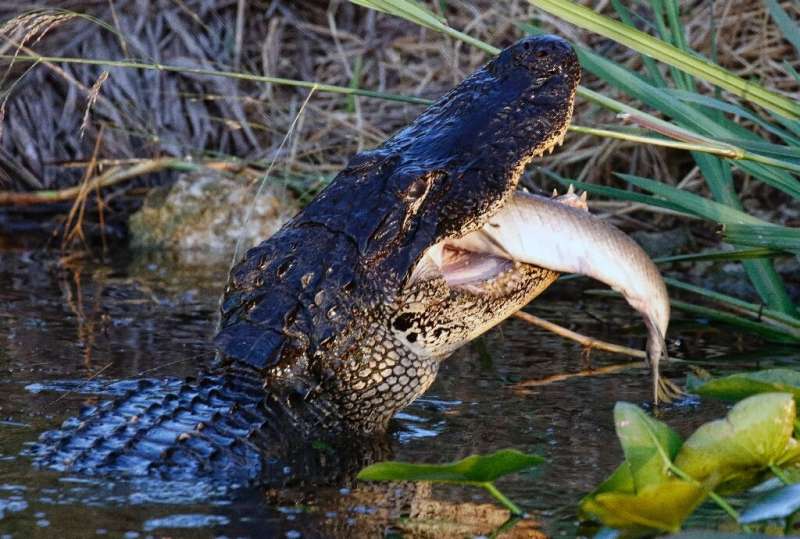Python patrols stalk Florida swamps to staunch marauding serpents

Along with the venomous lionfish, the Burmese python is perhaps the least welcome invasive species in Florida: lacking any natural predators, it has happily chomped its way through the state's wildlife.
And that is why Tom Rahill spends his nights stalking through the Everglades trying to kill the snakes.
"Make no mistake, this is a beautiful animal," said the 62-year-old, with a 10-foot (three-meter) python he had caught wrapped around his neck. "Look how gorgeous this critter is."
"It doesn't belong here, though. It's throwing the whole ecosystem off," he told AFP.
Rahill's patrols begin at night when he heads into the vast wetlands that occupy much of southern Florida and are full of alligators, mosquitos and, increasingly, pythons.
Native to Southeast Asia, the Burmese pythons have become a plague in Florida.
They first arrived most likely as pets toward the end of last century and then found their way to the Everglades, where they have flourished as if it were their natural habitat.
Dogs, cats, raccoons, birds, squirrels, rabbits and even small alligators: all have fallen prey to the snakes.
A 2015 study by the University of Florida and published by the Royal Society showed that in 11 months the serpents wiped out 77 percent of a marsh rabbit population released into the Everglades for study.

Rahill is one of 25 contractors hired by the Python Elimination Program, launched in 2017 by the South Florida Water Management District to "humanely euthanize" the constrictors.
The contractors receive a bounty of $50 for a four-foot (1.2 meter) snake and another $25 for every foot longer than that.
The snake Rahill carried round his neck had been caught "creeping along right down at the bottom of the levee," probably looking for a good spot to ambush its prey.
Had he let the snake go, Rahill believes it would have laid as many as 30 eggs, almost all of which would hatch.
"It's remarkable," he said.
-

Anne Gordon Vega, a contractor for the Florida Fish and Wildlife Conservation Commission, looks for Burmese python in the Everglades -

A team with the Big Cypress National Preserve in Ochopee, Florida holds a female python measuring over 17 feet long and weighing 140 pounds, with 73 developing eggs
The Florida Fish and Wildlife Conservation Commission has a separate program that pays up to $200 for eradicating a nest of the exotic reptiles.
Anne Gordon Vega, 60, spends her nights rounding up pythons for the FWC.
"My boys think that I am such a tough cookie, but they are very proud of me," she said.
She admits that her family finds her choice of evening activities unusual.
"They're absolutely shocked that this is what I do at night while they're, you know, enjoying the comforts of air conditioning and Netflix, and I'm out here in the Everglades."
© 2019 AFP

















